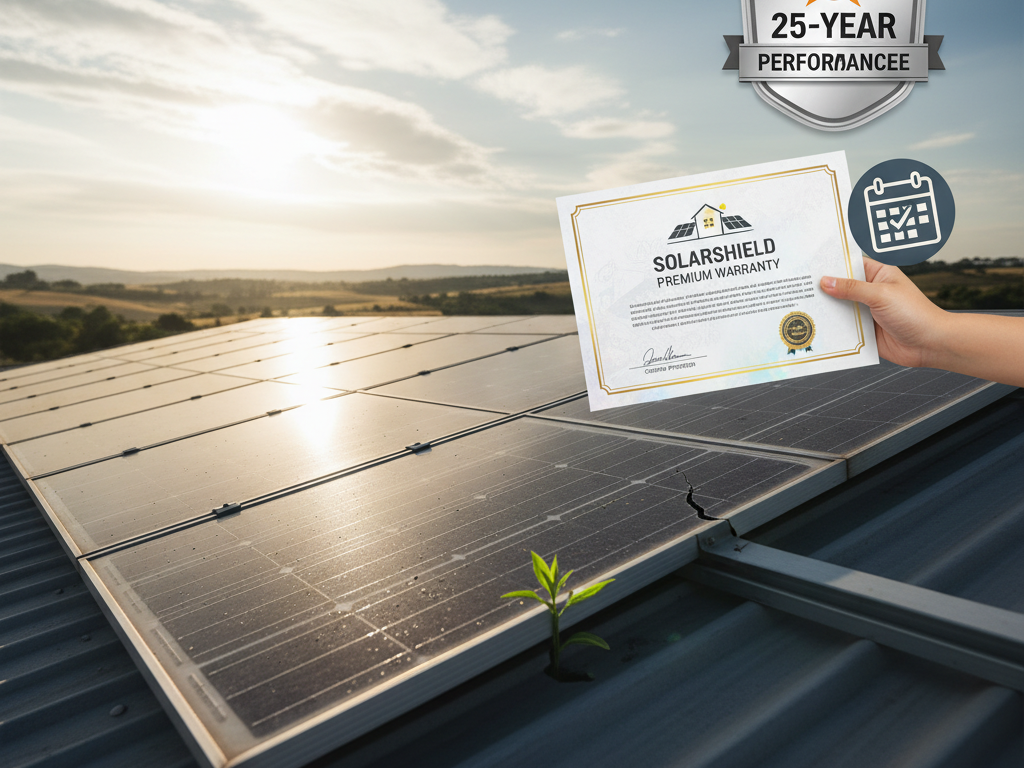“Wait… my solar warranty doesn’t cover this?”
You’ve invested thousands into a solar panel system, reassured by the promise that you have years of coverage if anything goes wrong. But the day comes when your panels stop performing, your inverter fails, or you notice visible damage.
You call to make a claim — only to be told:
- “Your warranty doesn’t cover that.”
- “This was caused by installation, not equipment.”
- “Your coverage expired after the home was sold.”
It’s frustrating. It’s confusing. And it’s a shock for homeowners who believed they were protected.
At Bennett Legal, we hear these stories regularly. Warranties get denied not only for legitimate reasons, but also for technicalities, misinterpretations, or companies hoping you won’t fight back. The fine print matters — and understanding your rights before and after installation can mean the difference between paying out-of-pocket or getting the coverage you were promised.
Why Solar Panel Warranties Get Denied
A warranty is a contract — and like any contract, it has terms, conditions, and exclusions. If your claim doesn’t fit neatly within those terms, the manufacturer or installer may deny it.
Common denial reasons include:
- Claim not covered under listed warranty scope.
- Missed filing deadlines for claims or transfers.
- Work done by unauthorized providers.
- Disputes between installer and manufacturer over responsibility.
Some denials are fair under the agreement. But others exploit technicalities or rely on your lack of familiarity with the paperwork. Knowing the distinction is key for deciding whether to challenge a refusal.
Understanding Solar Panel Warranties
Most solar panel systems come with two main categories of warranties:
1. Manufacturer Warranty
Covers defects in the panels, inverters, or other equipment. Often lasts 10–25 years. Includes performance guarantees (e.g., efficiency above 80% for 25 years) and product warranties for equipment defects.
2. Installer/Workmanship Warranty
Covers labor-related issues, such as improper installation, leaks from roof mounting points, or safety defects. Usually 5–10 years.
Why this matters: When something goes wrong, you need to know which warranty applies. A bad inverter might be manufacturer territory, but leaking where rails were mounted could be the installer’s responsibility. Without this clarity, you can be caught in a blame game — each side denying responsibility, leaving you without coverage.
Fine-Print Exclusions That Catch Homeowners Off Guard
Even strong warranties have exclusions buried in the fine print. These limit what is covered and give companies reasons to deny claims.
- Physical Damage Limitations
Many warranties exclude damage from weather events like hail, windstorms, or hurricanes — unless you bought specific coverage.
Example: A Texas homeowner had panels cracked during a hailstorm. The manufacturer denied the claim, citing “acts of nature” exclusions.
- Maintenance Clauses
Improper or insufficient maintenance can void coverage. Some require semi-annual checks by authorized providers.
Example: A Florida homeowner cleaned panels herself to save money. The manufacturer argued this caused “scratches and abrasion,” voiding the warranty.
- Unauthorized Repairs
If you let a non-approved contractor attempt repairs, the manufacturer can void the warranty. This can include your regular electrician.
- Efficiency Degradation
Performance warranties usually cover drops below a certain efficiency level — but that break point might be much lower than you expect, meaning moderate underperformance isn’t covered.
- Inverter Limitations
Some panel warranties exclude inverter replacement entirely, pushing that cost to homeowners or extended service plans.
Transfer Rules Most Homeowners Don’t Know
Selling a home with solar? Buyer assumes the warranty comes with it? Think again.
Many warranties require formal transfer within 30–90 days of the sale, often with documentation and a transfer fee. If that doesn’t happen:
- The warranty may expire for the new owner.
- Claims may be denied outright for lack of transfer records.
Example: A California buyer learned the manufacturer warranty was void because the seller didn’t file transfer paperwork when she bought the home. She faced $4,000 in replacement costs that would have been covered.
Installer vs. Manufacturer Coverage Mismatches
The installer warranty and manufacturer warranty can overlap — or leave gaps:
- Installer covers only labor defects for 10 years.
- Manufacturer covers only product defects for 25 years.
What happens after the installer warranty ends?
If performance drops but is linked to an installation issue, the manufacturer can refuse coverage, saying: “This is an installer problem.” Without installer coverage, you’re stuck.
Example: A New Jersey homeowner had panel wiring corroded after 12 years. The manufacturer claimed corrosion was an installation flaw; installer warranty had expired two years earlier.
5 Red Flags Your Warranty Might Be at Risk
The best time to protect your solar panel warranty isn’t when something breaks — it’s long before you ever need to make a claim. Many homeowners never realize their coverage has gaps until the moment they try to use it. By watching for these early warning signs, you can act while the solution is still simple and inexpensive.
Here are five major red flags that can put your warranty in jeopardy — and exactly why they matter.
- No Written Warranty From the Installer
If your installer only gave you verbal assurances — “Don’t worry, we’ve got you covered” — but never provided a physical or digital warranty document, your coverage may be limited or nonexistent.
Why it matters: Without a signed, clearly worded installer warranty, it’s your word against theirs if something goes wrong with the workmanship.
- You Never Registered the Manufacturer Warranty
Many manufacturers require online or paper registration shortly after installation to activate coverage. If this step isn’t completed — sometimes within 60 or 90 days — your warranty may not be valid.
Why it matters: If you or your installer skipped registration, the manufacturer can refuse to honor even legitimate claims.
- Warranty Is Tied to an Ongoing Maintenance Agreement You Don’t Have
Some manufacturers or installers require you to maintain a service plan or use authorized providers for routine inspections and cleanings. If you never signed up, the company can claim “improper maintenance” to deny claims.
Why it matters: Even minor lapses in service plan participation can void coverage entirely.
- Warranty Transfer Steps Skipped When Property Changed Hands
If you buy a home with pre-installed solar panels, the warranty may not automatically transfer to you. Many companies require formal transfer paperwork (and sometimes a fee) within a specific timeframe after closing.
Why it matters: Missing a transfer deadline can leave new owners without coverage, even if they assumed the warranty was still valid.
- Installer Closed Business Without Arranging Alternate Coverage
Workmanship warranties are worthless if the issuing company no longer exists — unless they arranged for a backup provider to honor the coverage.
Why it matters: If the installer is gone, you may have to rely solely on manufacturer coverage, which won’t cover installation-related defects.
Why Spotting These Matters
If you identify any of these red flags now:
- Contact the manufacturer or installer to correct the issue.
- Get missing registrations completed.
- Secure written warranty documents.
- Clarify transfer or maintenance requirements.
Catching problems early gives you the chance to shore up coverage, close gaps, and avoid nasty surprises when you finally need to file a claim.
Legal Protections for Homeowners
Several laws protect consumers from unfair warranty denials:
Magnuson-Moss Warranty Act
Requires warranties to be clear and enforceable, and prevents disclaimers that contradict sales promises.
State Contractor Laws
In many states, workmanship warranties are tied to contractor licensing — allowing claims through licensing boards.
State Consumer Protection Statutes
False promises about warranty scope can be actionable as misrepresentation, opening the door to damages and attorney’s fee recovery.
At Bennett Legal, we use these laws to challenge wrongful denials and force compliance with actual warranty terms.

Steps to Take if Your Solar Warranty Claim Has Been Denied
- Get a Written Reason for Denial: Verbal explanations are easy to deny later. Demand a written statement.
- Collect All Warranty Documents: Include both manufacturer and installer agreements, proof of purchase, and installation records.
- Identify the Responsible Party: Was the claim about the product or the workmanship? Push responsibility where it belongs.
- Compare Denial Reason to Warranty Terms: Highlight any language suggesting your issue should be covered.
- Dispute With Both Parties if Needed: Hold both manufacturer and installer accountable — separately.
- Consult an Attorney: An experienced consumer protection lawyer can interpret clauses and push the claim legally.
- File Complaints: If stonewalled, file with your state AG, the FTC, or licensing agencies.
How to Prevent Future Warranty Denials?
- Register Immediately: If the manufacturer requires registration to activate the warranty, do it now.
- Use Authorized Service Providers: Don’t risk voiding coverage with unauthorized repairs.
- Keep Maintenance Records
- Document every service, including dates, provider names, and invoices.
- Confirm Transfer Agreements: If selling or buying, handle paperwork during closing.
- Get All Terms in Writing: Including promises made during the sales pitch.
You are not Alone- Turning ‘Warranty Denied’ into Accountability
At Bennett Legal, we’ve seen every excuse in the book — “You didn’t register in time,” “That’s an installer issue,” “The system’s still working ‘within tolerance.’”
Each one leaves homeowners footing the bill for problems they were told would be covered for decades.
We don’t let those denials stand.
When you bring us your denied claim, our team gets to work fast to:
- Dissect the denial letter line by line, comparing it against warranty language, sales materials, and state warranty laws.
- Expose contradictions between what you were sold and what the company now claims the warranty excludes.
- Hold installers and manufacturers accountable together — no more passing the blame back and forth while your panels sit idle.
- Use federal and state consumer laws — like the Magnuson-Moss Warranty Act and Texas DTPA — to force compliance and recover damages.
- Push for full cost recovery, including replacement, labor, lost production, and legal fees when deception or negligence played a role.
Solar companies count on fine print and fatigue to wear homeowners down. We count on documentation, deadlines, and the law to bring them back to the table.
If your solar warranty was denied, it’s not the end of your protection — it’s the beginning of your case. Bennett Legal fights warranty denials head-on, turning technicalities into accountability and restoring the coverage you were promised.
FAQ
Can my warranty be denied for weather damage?
Yes, if excluded by the contract. Homeowners may need separate insurance for storm protection.
What if my installer is out of business?
Manufacturer coverage still applies for product defects, but workmanship issues may be harder to address.
Do I have rights if my warranty wasn’t registered?
You may, depending on whether registration was clearly disclosed as required at sale.
Can a manufacturer deny if the installer made a mistake?
Yes — but state contractor laws may give you recourse against the installer.

